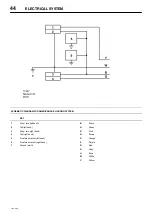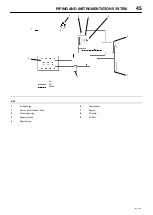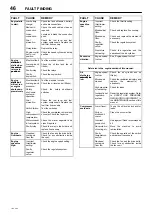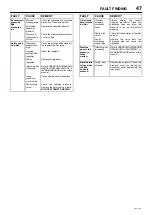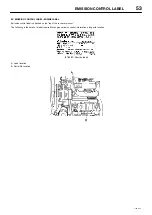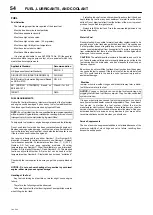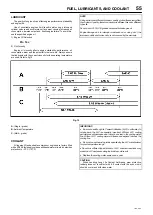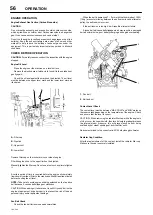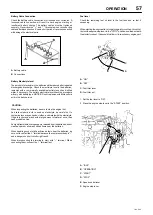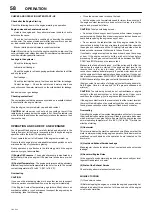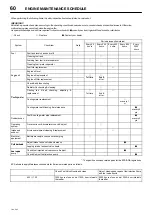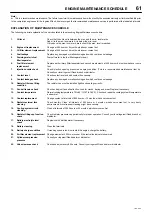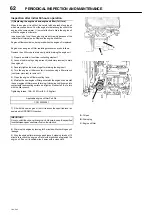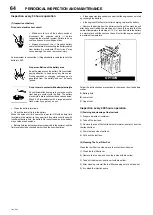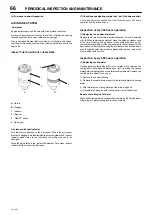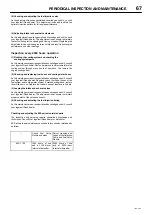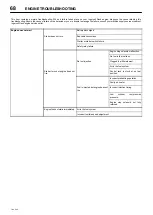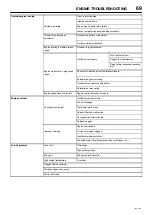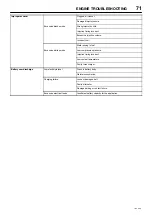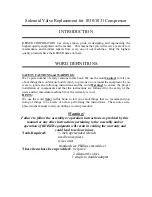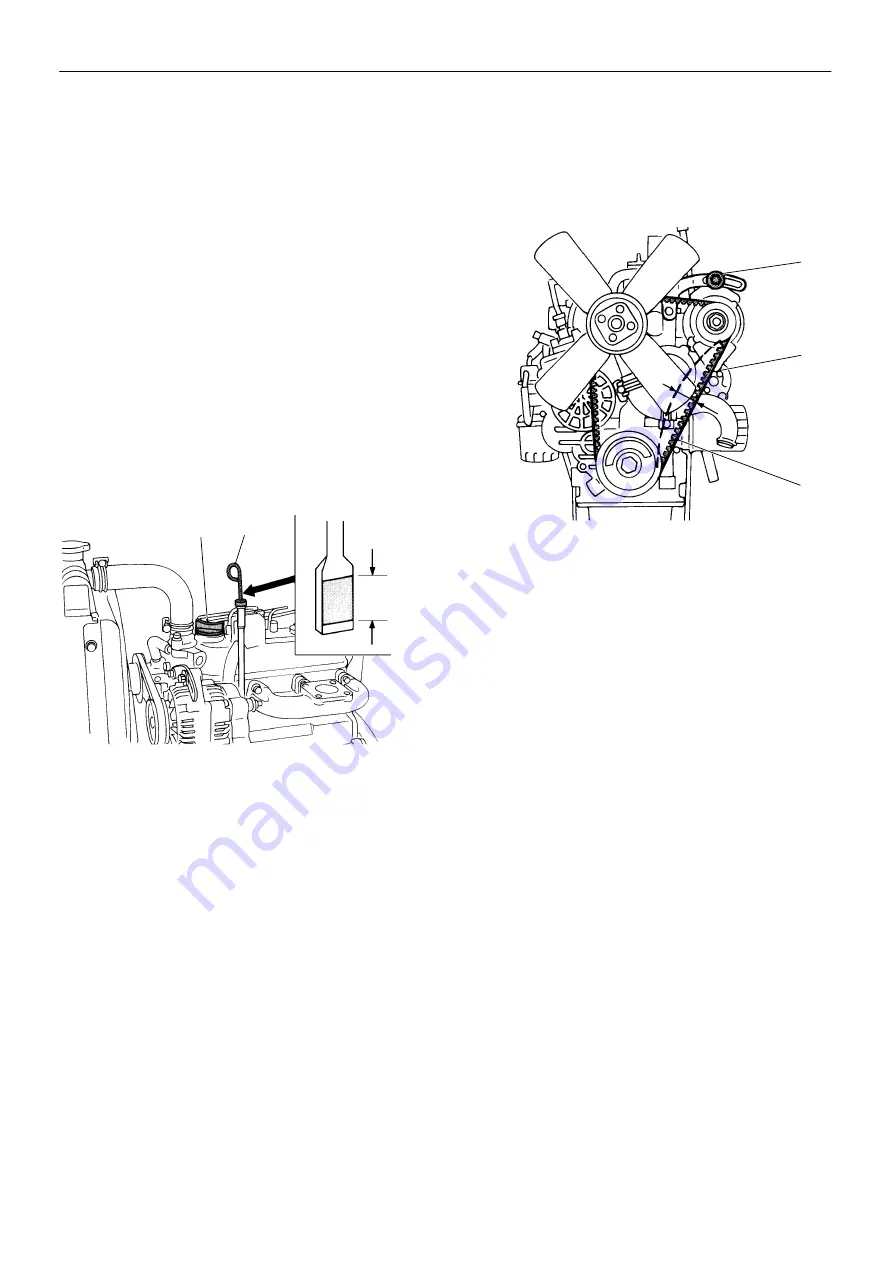
56
OPERATION
7/20, P65
ENGINE OPERATION
Engine Exhaust Gas Caution (Carbon Monoxide)
CAUTION
Do not breathe exhaust gas because it contains carbon monoxide,
which by itself has no color or odor. Carbon monoxide is a dangerous
gas. It can cause unconsciousness and can be lethal.
Do not run the engine in confined areas (such as garages or next to a
building). Keep the exhaust tailpipe area clear of snow and other
material to help reduce the buildup of exhaust gases under the
equipment. This is particularly important when parked in blizzard
conditions.
CHECK BEFORE OPERATION
CAUTION:
For safety reasons, conduct the inspection with the engine
stopped.
Engine Oil Level
.
Place the engine or the machine on a level surface
Remove the dipstick, wipe it with a cloth. Insert it fully and take it out
gently again.
Check the oil level against the marks on the dipstick. The oil level
must be between the upper level mark and the lower level mark as
illustrated.
A
B
D
C
A.
Filler cap
B.
Dipstick
C.
Upper limit
D.
Lower limit
Remove filler cap on the rocker arm cover side of engine
Fill with engine oil up to the upper limit on the dipstick.
Manually tighten the filler cap. Do not use a tool such as pliers to tighten
it.
A certain period of time is required before the engine oil completely
flows down from the oil filler to the crankcase. Wait at least ten minutes
before checking the oil level.
NOTE:
Take care to avoid engine oil being splashed on the fan drive
belt because it causes belt slippage or slackness.
CAUTION: When adding oil, take care not to spill it. If you spill oil on the
engine or equipment, wipe it properly, to prevent the risk of fire and
personal injury and/or equipment damage.
Fan Belt Check
Check the fan belt for tension and abnormalities.
When the belt is depressed 7
−
9 mm with the thumb (about 100 N
[10 kg] pressure) midway between the bottom pulley and alternator
pulley, the belt tension is correct.
If the belt tension is too high, it will result in alternator failure.
A loose belt will cause belt slippage which may result in a damaged
belt, abnormal noise, poor battery charging and engine overheating.
1
2
2
1.
Fan belt
2.
Bolt and nut
Coolant Level Check
The coolant level must be between “MAX COLD” and “MIN” marks on
the reserve tank depending on the temperature of the engine. Check
and ensure that the level is correct.
CAUTION: When removing the radiator filler cap, while the engine is
still hot, cover the cap with cloth, then turn it slowly to gradually release
the internal steam pressure. this will prevent anyone from being
scalded by hot steam spurting out from the filler neck.
Add coolant mixed to the correct ratio: 50/50 ethylene glycol/water.
Radiator Cap Condition
After the replenishment of the coolant, install the radiator filler cap.
Make sure the cap is securely installed.



